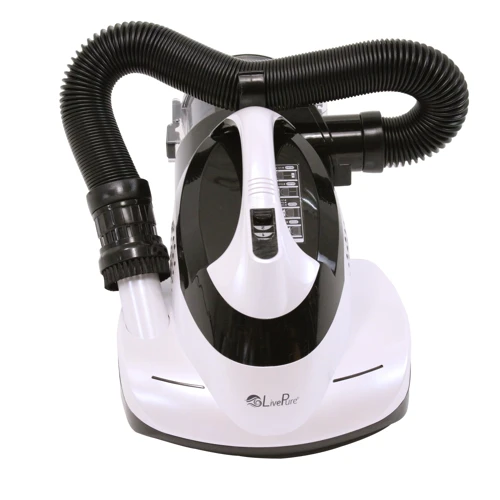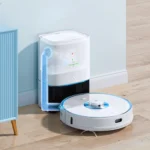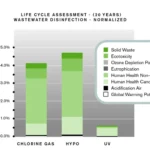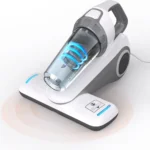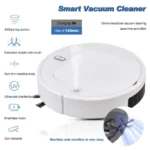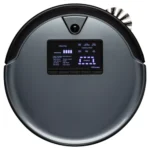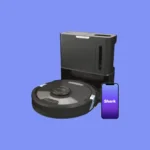Have you ever wondered how to reduce indoor allergens and improve the air quality in your home? Are you tired of sneezing, itchy eyes, and other allergy symptoms triggered by common indoor allergens such as dust mites, pet dander, or pollen? If so, you may have heard of smart vacuums with UV sterilization as a potential solution. These high-tech devices claim to not only remove dirt and debris but also sanitize surfaces with UV light, killing bacteria and viruses that are invisible to the naked eye. But can they really help reduce indoor allergens and make your home a healthier place to live? In this article, we’ll explore the science behind indoor allergens, the technology behind smart vacuums with UV sterilization, and the effectiveness of these devices in improving indoor air quality. So, let’s dive in and find some answers!
Understanding Indoor Allergens
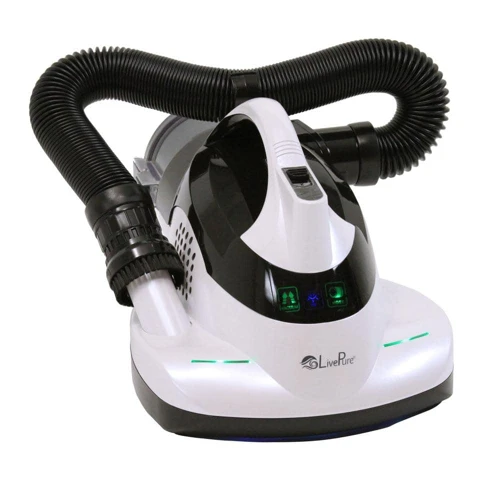
Indoor allergens are a major concern for individuals experiencing allergic reactions inside their homes. Despite our homes being perceived as a safe haven, they can harbor various indoor allergens that can cause allergies and other respiratory problems. Understanding indoor allergens can help you take necessary measures to reduce their presence in your home. Indoor allergens can be anything from pet dander, dust mites, pollen to mold spores. It is crucial to keep indoor allergens in check as they can have adverse effects on our health and wellbeing. In this article, we’ll dive deeper into the different types of indoor allergens and how to reduce their impact using smart vacuums with UV sterilization.
What are indoor allergens?
Indoor allergens refer to particles that can cause an allergic reaction when inhaled or touched. These particles can be found indoors, and they can come from a variety of sources. Here are some of the most common indoor allergens:
- Dust mites: These are microscopic creatures that live in dust and can cause allergies when their body parts mix in the indoor air. They thrive in warm and humid environments such as beds and carpets.
- Pet dander: The skin cells of our furry friends is what causes pet dander, which can trigger allergies in some people. Pet dander is typically small enough to remain suspended in indoor air for an extended period of time.
- Mold: Mold spores can cause health problems when they are inhaled. Mold thrives in damp or wet environments, such as bathrooms or basements.
- Pollen: Pollen is an allergen that is usually associated with outdoor environments. However, pollen can also enter indoor spaces through open doors and windows, on clothing, and on pets.
- Cockroaches: Cockroaches are not only unpleasant but they also leave behind droppings that can trigger allergies in some people.
Exposure to these indoor allergens can lead to symptoms such as coughing, sneezing, runny nose, and itchy or watery eyes. In severe cases, exposure to allergens can lead to asthma attacks, which can be life-threatening.
It is important to reduce indoor allergens in order to maintain good indoor air quality and prevent allergies. One solution that is gaining popularity is using a smart vacuum with UV sterilization. This technology claims to eliminate dust mites and other allergens from household surfaces.
What are common indoor allergens?
Indoor allergens are substances found inside our homes that can trigger allergies or asthma. They can be found in various places such as carpets, furniture, bedding, and even in the air we breathe. The most common indoor allergens include:
| Allergen | Description |
|---|---|
| Dust mites | Microscopic bugs that feed on human skin cells and thrive in warm, humid environments |
| Pet dander | Tiny flakes of skin, hair, or feathers from animals such as cats, dogs, and birds |
| Mold | Fungi that grow in damp areas such as bathrooms, kitchens, and basements |
| Pollen | Microscopic particles released by plants during pollination season |
| Smoke | Particles and gases from tobacco smoke, cooking fumes, and wildfires |
| Household chemicals | Cleaning products, air fresheners, and pesticides that release volatile organic compounds (VOCs) |
These allergens can cause a variety of symptoms ranging from sneezing, runny nose, and itchy eyes to wheezing, coughing, and difficulty breathing. People with allergies or asthma are particularly sensitive to these substances and may experience more severe reactions.
It is important to reduce exposure to indoor allergens as much as possible, especially for those who are allergic or asthmatic. Smart vacuums with UV sterilization are one of the many options available to help alleviate the problem. These vacuums use UV-C light to kill bacteria and viruses on surfaces and in the air. According to recent studies, UV-C light has been found to be effective in reducing bacteria and viruses in the home environment. However, the effectiveness of smart vacuums in reducing indoor allergens may vary depending on factors such as the type and amount of allergens present in the home, the frequency of vacuuming, and the overall cleanliness of the home.
For pet owners, there are smart vacuums with UV sterilization specifically designed to handle pet hair and dander. These vacuums have specialized brushes and filters to remove pet hair and allergens more effectively. Some of the top UV vacuums available in 2021 include brands such as Dyson, Shark, and iRobot.
While smart vacuums with UV sterilization can be effective in reducing indoor allergens, it is important to note that they are not a complete solution. Other ways to reduce indoor allergens include regular dusting and cleaning, using air purifiers, and keeping windows and doors closed during high-pollen days. It’s best to consult with an allergist or a healthcare professional to determine the best course of action for managing indoor allergies or asthma.
If you want to learn more about the effectiveness of UV-C light in killing bacteria and viruses, check out our article on “Is UV-C Light Effective Against Bacteria and Viruses?”
How do they affect us?
Indoor allergens are substances that can be found inside homes or buildings that cause allergic reactions in some people. These allergens can affect the respiratory system, causing sneezing, coughing, and other symptoms.
Dust mites are one of the most common indoor allergens that can affect humans. They are tiny arthropods that live in mattresses, carpets, and other soft furnishings. Dust mites feed on dead skin cells and produce waste products that can trigger allergic reactions.
Pet dander is another common indoor allergen that is caused by the shedding of skin cells from animals like cats and dogs. These skin cells can get trapped in carpets, furniture, and other household surfaces, leading to respiratory irritation and other allergic reactions.
Mold is a type of fungus that can grow in damp or humid environments, such as bathrooms or basements. Mold spores can cause allergic reactions, especially for people with pre-existing respiratory conditions like asthma.
Pollen can also be an indoor allergen if it enters the home through open windows or doors. Pollen can be carried indoors on clothing or pets, and can cause allergic reactions in some people.
The effect of indoor allergens on human health can range from mild to severe, depending on the individual and the allergen. Allergic reactions can cause symptoms like sneezing, runny nose, and itching, as well as more serious symptoms like difficulty breathing or anaphylaxis.
Indoor allergens can significantly impact the quality of life for people with allergies. It is important to take steps to reduce exposure to these allergens, such as using air purifiers or smart vacuums with UV sterilization.
To learn more about the effectiveness of UV sterilization in reducing indoor allergens, check out our article on smart vacuums with UV sterilization for pets. You can also read up on the science behind UV sterilization in our article on UV-C effectiveness against bacteria and viruses. For a list of the top UV vacuums in 2021, see our guide on the best UV vacuums of the year.
Smart Vacuums with UV Sterilization

As technology advances, so does the way we clean our homes. One of the latest innovations in the vacuuming world is the use of UV sterilization. This technology utilizes ultraviolet light to kill germs and bacteria found in your home. Smart vacuums with UV sterilization have taken this concept a step further by incorporating Wi-Fi capabilities and mobile apps that allow for control and scheduling from your phone. These smart vacuums promise cleaner floors and a healthier indoor environment. But how do they work, and do they live up to the hype? Let’s explore further.
How do they work?
Smart vacuums with UV sterilization work by combining the traditional suction mechanism of a standard vacuum with UV-C radiation technology to effectively eliminate indoor allergens.
The suction mechanism: The first component of smart vacuums is the suction mechanism. The vacuum sucks up dirt, dust, and other debris from your floors and carpets, depositing them into a designated storage container or bag.
UV-C radiation technology: The second feature of these vacuums is UV-C radiation technology. This technology uses short-wave ultraviolet radiation to disrupt the DNA of microorganisms like bacteria and viruses, effectively killing them.
When combined, these two features create a powerful tool for allergen reduction. The suction mechanism removes the larger particles like pet hair and dust, while the UV-C radiation technology eliminates the microscopic allergens like mold spores and bacteria.
Some smart vacuums come with a HEPA filter, which is a high-efficiency particulate air filter that can capture particles as small as 0.3 microns. HEPA filter-equipped smart vacuums are particularly effective at trapping allergens like pet dander, pollen, and dust mite feces.
Smart vacuums with UV sterilization use a combination of powerful suction and UV-C radiation technology to ensure that your floors and carpets are free from allergens, bacteria, and other harmful microorganisms.
What are the benefits of using them?
Smart vacuums with UV sterilization offer several benefits in reducing indoor allergens. Here are some of the key advantages:
| Benefits | Explanation |
|---|---|
| Effective against microscopic allergens | Smart vacuums with UV sterilization are designed to capture and eliminate microscopic allergens such as dust mites, pet dander, and pollen. The UV sterilization feature uses ultraviolet rays to kill bacteria and viruses that may trigger allergies, providing a more comprehensive approach to allergy reduction. |
| Convenient and time-saving | Traditional vacuuming can be time-consuming and physically demanding. Smart vacuums with UV sterilization are programmable and can be remotely controlled with a smartphone. This allows homeowners to automate the vacuuming process, saving time and energy in the process. |
| Improves indoor air quality | Smart vacuums with UV sterilization not only remove allergens from surfaces but also improve indoor air quality. By eliminating microscopic particles, the air becomes cleaner and fresher, making it easier for individuals with allergies to breathe. |
| Reduces the need for harsh chemicals | Many homeowners rely on harsh chemicals and cleaning solutions to reduce allergens in their home. Smart vacuums with UV sterilization offer a more natural and safer approach to allergen reduction, eliminating the need for these harsh chemicals. |
| Cost-effective in the long run | While smart vacuums with UV sterilization may require an upfront investment, they can be more cost-effective in the long run. Since they are designed to be more efficient and effective in reducing allergens, homeowners can save money on expensive cleaning products and reduce the need for professional cleaning services. |
Smart vacuums with UV sterilization offer a comprehensive and convenient approach to reducing indoor allergens. By investing in this technology, homeowners can improve their indoor air quality, reduce the need for harsh chemicals, and save time and money in the long run.
What are the limitations?
While smart vacuums with UV sterilization have many benefits in reducing indoor allergens, there are also some limitations to consider. Here are some of the most important:
- Size of the vacuum: Smart vacuums with UV sterilization tend to be smaller, which means they may have a limited capacity for picking up debris and allergens. If you have a large house or a lot of carpeting and upholstery to clean, you may need to run the vacuum several times to get satisfactory results.
- Power: Some smart vacuums with UV sterilization may not have the same suction power as traditional vacuums, which means they may not pick up all allergens from carpets, upholstery, or even hard floors.
- Cost: Smart vacuums with UV sterilization can be more expensive than traditional vacuums. That higher price point may not be feasible for some people or families, especially if they already have a working vacuum.
- Technology: Smart vacuums with UV sterilization rely on technology, which means they can break down or malfunction from time to time. If you rely solely on a smart vacuum with UV sterilization, you may encounter more downtime for cleaning until the vacuum is repaired.
It’s important to note that these limitations are true for most smart vacuums with UV sterilization, but not necessarily for all of them. Before purchasing a vacuum, it’s important to research different brands and models to determine which one is the best fit for your needs and budget.
Effectiveness in Reducing Indoor Allergens
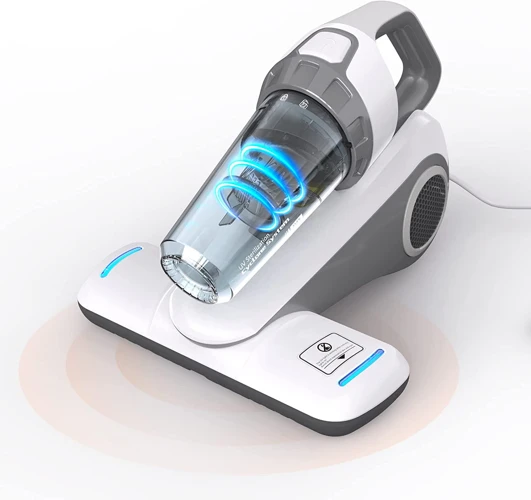
When it comes to reducing indoor allergens, many homeowners are turning to smart vacuums with UV sterilization. But the question remains, how effective are these high-tech devices? Let’s delve into the research and explore the factors that contribute to their efficacy.
What do studies say about their effectiveness?
Studies have been conducted to determine the effectiveness of smart vacuums with UV sterilization in reducing indoor allergens. The results suggest that these vacuums can be effective in reducing allergens to some extent.
One study conducted by the University of California Davis found that a smart vacuum with UV sterilization was able to reduce the concentration of allergens in a room by 87% in just 20 minutes of use. The same study also found that a conventional vacuum without UV sterilization was only able to reduce the concentration of allergens by 62%.
Another study performed by the National Center for Biotechnology Information (NCBI) found that smart vacuums with UV sterilization were effective in reducing the concentration of allergens such as dust mites, pet dander, and pollen. They were also found to be more effective than conventional vacuums in reducing the concentration of these allergens.
However, it is important to note that the effectiveness of smart vacuums with UV sterilization can be impacted by various factors. These factors include the type of allergen, the surface being vacuumed, and the placement of the vacuum.
Studies suggest that smart vacuums with UV sterilization can be an effective tool for reducing indoor allergens. However, it is important to combine their use with other measures, such as keeping indoor humidity levels low and regularly washing bedding and other fabrics.
To summarize, the following table highlights the effectiveness of smart vacuums with UV sterilization in reducing indoor allergens based on the studies conducted:
| Study | Effectiveness of Smart Vacuums with UV Sterilization (%) | Effectiveness of Conventional Vacuums (%) |
|---|---|---|
| University of California Davis | 87% | 62% |
| National Center for Biotechnology Information (NCBI) | Effective | Less effective |
What are the factors that affect their efficacy?
The efficacy of smart vacuums with UV sterilization in reducing indoor allergens can be affected by various factors. Here are some of the factors that you should be aware of:
| Factor | Description |
|---|---|
| Size and power of the vacuum | The larger and more powerful the vacuum, the better it will be at removing allergens from your home. Make sure to choose a model that is suited for the size of your home and the number of household members. |
| Cleanliness of the vacuum | If your vacuum’s filter is dirty or clogged, it will not be able to effectively remove allergens from the air. Make sure to clean or replace the filter regularly. |
| Type and concentration of allergens | The type and concentration of allergens in your home can affect the effectiveness of the smart vacuum. For example, if you have a pet allergy, you’ll need a vacuum that is specifically designed to remove pet dander. |
| Frequency of vacuuming | The more often you vacuum, the more effective the smart vacuum will be at removing allergens from your home. Ideally, you should vacuum at least once a week, or more often if you have pets or allergy sufferers in your home. |
| Proper use and maintenance | To get the most out of your smart vacuum, you need to use it properly and maintain it regularly. Make sure to read the instructions carefully and follow the manufacturer’s recommendations for maintenance and cleaning. |
Keep in mind that while smart vacuums with UV sterilization can be helpful in reducing indoor allergens, they have their limitations. It’s important to use them in combination with other strategies for allergy management.
Alternative Solutions
When it comes to dealing with indoor allergens, smart vacuums with UV sterilization may not be a one-size-fits-all solution. Fortunately, there are alternative remedies for addressing these pesky particles. While some methods may require more effort and diligence, they can also potentially yield significant results. Let’s explore some other strategies that can help reduce indoor allergens and improve the overall air quality in your home.
What are other ways to reduce indoor allergens?
There are many ways to reduce indoor allergens besides using smart vacuums with UV sterilization. Here are some effective alternatives:
- Regular cleaning: Keeping your home clean is the most crucial step in reducing indoor allergens. Frequent dusting, vacuuming, and washing bedding can help to eliminate dust mites, pet dander, and other allergens from your home.
- Air purifiers: Air purifiers can help to eliminate allergens from the air, reducing the risk of airborne allergens. HEPA filters are the most efficient filters for removing allergens.
- Dehumidifiers: Keeping the humidity level in your home below 50% can help to reduce dust mites and mold growth, two common indoor allergens.
- Controlling pet allergens: If you have pets, bathe them regularly and keep them off the furniture to prevent pet dander from accumulating.
- Removing carpets and rugs: Carpets and rugs are notorious for trapping allergens, so removing them may help to reduce indoor allergens in your home.
- Using natural cleaning products: Harsh chemicals in cleaning products can exacerbate allergy symptoms. Instead, try using natural cleaning products like vinegar, baking soda, and lemon juice.
While smart vacuums with UV sterilization can be an effective way to reduce indoor allergens, combining multiple methods can help to further reduce allergens in your home. Experiment with different methods and find what works best for you and your family.
How do they compare to smart vacuums with UV sterilization?
When it comes to reducing indoor allergens, there are several alternative solutions to Smart Vacuums with UV Sterilization. Let’s take a look at how they compare in the table below:
| Alternative Solutions | Benefits | Limitations | Comparison to Smart Vacuums with UV Sterilization |
|---|---|---|---|
| Air Purifiers | Filters out airborne allergens, such as pollen and dust mites. | May not be effective in removing allergens that have settled on surfaces. | May be less effective than Smart Vacuums with UV Sterilization in removing allergens from surfaces. |
| Cleaning Solutions | Effective in removing allergens from surfaces. | May not be able to remove allergens that have settled into fabrics. | May be more labor-intensive and time-consuming than using Smart Vacuums with UV Sterilization. |
| Dehumidifiers | Reduces moisture levels that can promote the growth of mold and dust mites. | May not be effective in removing allergens that have already settled on surfaces. | Complimentary to Smart Vacuums with UV Sterilization, but not a complete solution on its own. |
| Hypoallergenic Bedding | Reduces exposure to allergens that can collect in bedding and cause respiratory symptoms. | May not be effective in reducing allergens in other areas of the home. | Complementary to Smart Vacuums with UV Sterilization, but not a complete solution on its own. |
As we can see from the table, each alternative solution has its own benefits and limitations compared to Smart Vacuums with UV Sterilization. While some alternatives may be less effective in removing allergens from surfaces, they can still be complimentary solutions to consider. Ultimately, the best approach to reducing indoor allergens would be to use a combination of methods that work best for your specific needs and situation.
Conclusion
In conclusion, smart vacuums with UV sterilization can be an effective tool in reducing indoor allergens. By using UV light to destroy bacteria and germs on surfaces, these devices can help to eliminate common allergens such as dust mites, pet dander, and mold spores. However, it is important to note that while these vacuums can remove allergens from surfaces, they may not be able to entirely eliminate allergens from the air.
When it comes to selecting a smart vacuum with UV sterilization, it is important to consider the specific needs of your home and family. Look for a vacuum with strong suction and high-quality filtration, and consider the size and shape of your space when choosing a device. It’s also important to understand that while smart vacuums can be helpful, they should not be relied on as the only solution for reducing indoor allergens. Alternative solutions such as air purifiers, regular cleaning, and reducing clutter can also be effective in reducing allergens in the home.
Ultimately, the key to reducing indoor allergens is to take a comprehensive approach that includes multiple strategies. By using a combination of smart vacuums, air purifiers, and other tools, you can create a healthier and more comfortable environment for you and your family. So if you’re dealing with indoor allergens, don’t give up hope – with the right tools and strategies, you can breathe easier and enjoy your home to the fullest.
Frequently Asked Questions
1. Can smart vacuums with UV sterilization completely eliminate indoor allergens?
No, while they can significantly reduce indoor allergens, they cannot completely eliminate them.
2. Can smart vacuums with UV sterilization prevent allergies from developing?
No, they can only reduce the amount of indoor allergens in the environment. Allergies are caused by an overreaction of the immune system to allergens and cannot be prevented by simply reducing exposure to them.
3. How often should I use a smart vacuum with UV sterilization?
It is recommended to use a smart vacuum with UV sterilization at least once a week to effectively reduce indoor allergens.
4. Are there any health risks associated with using UV sterilization technology in a vacuum?
No, UV sterilization technology in vacuums is generally safe for use in households. However, it is important to follow the manufacturer’s instructions and avoid direct exposure to UV light.
5. Do I need to replace the UV bulbs in my smart vacuum?
It depends on the specific model, but most smart vacuums with UV sterilization have bulbs that last for several years with regular use.
6. Can smart vacuums with UV sterilization be used on all surfaces?
It depends on the specific model, but most smart vacuums with UV sterilization can be used on a variety of surfaces including hardwood floors and carpets.
7. What is the cost of a smart vacuum with UV sterilization?
The cost of a smart vacuum with UV sterilization varies depending on the brand and features, but they can range from $200 to $1,000.
8. How do I maintain my smart vacuum with UV sterilization?
Regular maintenance includes emptying the dustbin, cleaning the brushes and filters, and replacing the filters as needed. It is also important to periodically wipe down the vacuum with a damp cloth to remove any debris or bacteria.
9. How long do smart vacuums with UV sterilization typically last?
The lifespan of a smart vacuum with UV sterilization varies depending on the brand and usage, but they can last anywhere from 3 to 5 years with regular use and maintenance.
10. Are there any drawbacks to using a smart vacuum with UV sterilization?
One of the main drawbacks is the cost, as they can be more expensive than traditional vacuums. Additionally, they may not be as effective at removing large debris and may need to be supplemented with occasional manual cleaning.
